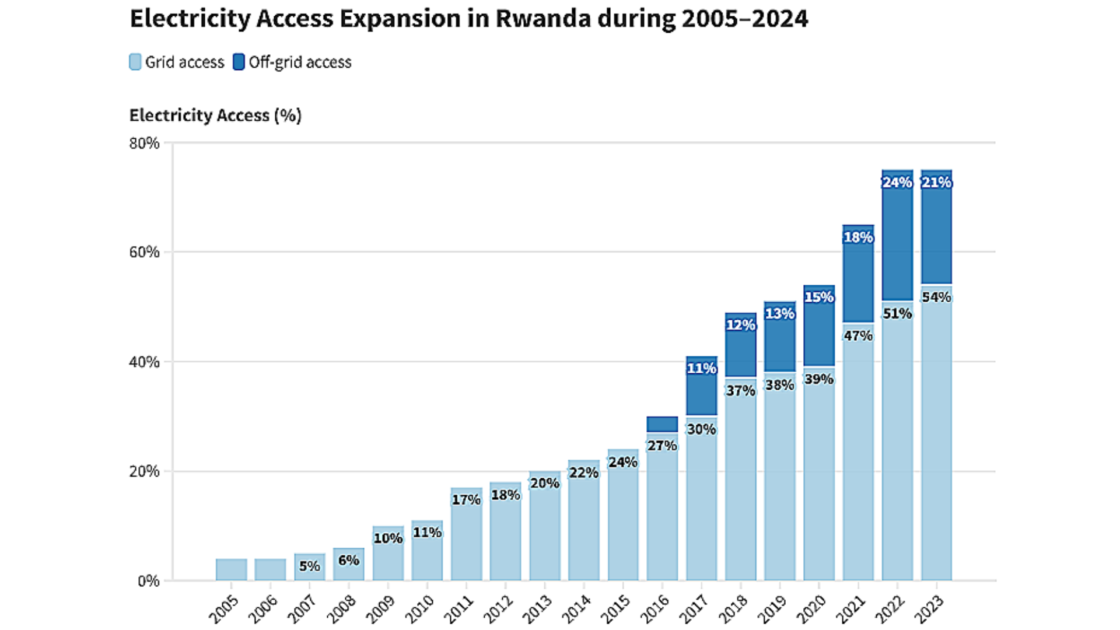Rwanda’s Electrification Success: From 6% to 75% Access in 15 Years

In the past decade and a half, Rwanda’s electricity sector has seen transformative growth, increasing access to electricity from 6% in 2009 to 75% by March 2024. This development has facilitated electrification in 100% of health centres and administrative facilities at the sector level, while also reaching 84% of schools and small enterprises. According to the World Bank, Rwanda’s electrification expansion, especially from 2010 to 2020, was one of the fastest globally, ranking 11th worldwide and 3rd in Africa.
This rapid growth was supported by deliberate government actions. Starting in 2008, the Rwandan government prioritized electricity access in its national strategies. The Economic Development and Poverty Reduction Strategy (EDPRS) phases 1 (2008–2012) and 2 (2013–2018) as well as the National Strategy for Transformation (2017–2024) each embedded ambitious electrification targets, setting the foundation for a universal electrification goal by 2024.
The 2024 Electricity Statistics Report highlights that in the second quarter of 2024, Rwanda generated 365.9 GWh of electricity, marking a 16.4% increase from the same period in 2023. Hydro and methane gas dominated the energy mix, contributing 49.4% and 38.5% respectively, while imports accounted for 7.1%.
Rwanda’s electrification efforts also benefited from structural reforms in 2013 that clarified roles within the sector: policy and strategy oversight by the Ministry of Infrastructure, regulatory functions by the Rwanda Utilities Regulatory Authority, and operational management by the Rwanda Energy Group (REG) and its subsidiaries.
Private sector involvement has been crucial, particularly for off-grid solutions. Rwanda encouraged private investment in Solar Home Systems (SHS), and as of March 2024, SHS connected 22% of households. Financial support from the Development Bank of Rwanda, alongside international funding totalling over $1.4 billion, supported this dual approach to on- and off-grid expansion.
These efforts allowed Rwanda to maintain energy sector subsidies below 1.4% of GDP while expanding electricity access. This balance between growth and fiscal responsibility provides a model for other nations seeking rapid yet sustainable electrification.
Graph Source: Rwanda Energy Group and Ministry of Infrastructure (as of March 2024)
